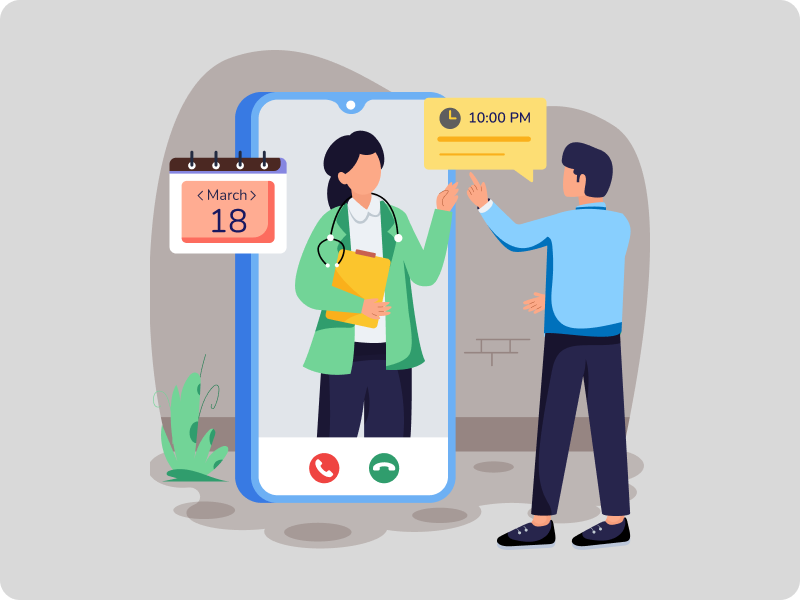Effective Strategies for Healthcare Providers to Leverage Google Ads
In today’s digital age, having a strong online presence is essential for healthcare providers to attract new
patients and grow their practice. One of the most effective ways to achieve this is through Google Ads, a
powerful advertising platform that allows you to reach potential patients at the exact moment they’re
searching for healthcare services.
However, running successful Google Ads campaigns requires more than just setting up an account and creating ads.
It requires a strategic approach tailored to the unique needs of the healthcare industry. In this blog, we’ll
explore effective strategies for healthcare providers to leverage Google Ads and maximize their return on investment (ROI).
Why Google Ads Matter for Healthcare Providers
Google Ads is a pay-per-click (PPC) advertising platform that allows you to display ads on Google’s search engine
results pages (SERPs) and its network of partner websites. For healthcare providers, Google Ads offers several key benefits:
- Targeted Reach: Show your ads to users searching for specific healthcare services in your area.
- Cost-Effective: You only pay when someone clicks on your ad, making it a cost-effective marketing tool.
- Measurable Results: Track the performance of your campaigns in real-time and adjust your strategy accordingly.
- Increased Visibility: Appear at the top of search results, even if your website doesn’t rank organically.
Effective Strategies for Healthcare Providers to Leverage Google Ads
1. Define Your Goals and Target Audience
Before launching a Google Ads campaign, clearly define your goals and target audience. Are you looking to attract
new patients, promote a specific service, or increase appointment bookings? Understanding your objectives will
help you create targeted ads that resonate with your audience.
2. Use Relevant Keywords
Keywords are the foundation of any successful Google Ads campaign. Use tools like Google Keyword Planner to identify
relevant keywords that potential patients are searching for, such as:
- “Primary care doctor near me”
- “Dermatologist in [city]”
- “Telemedicine services for [condition]”
Focus on long-tail keywords (e.g., “pediatric dentist for toddlers in [city]”) to attract highly targeted traffic.
3. Create Compelling Ad Copy
Your ad copy should be clear, concise and action-oriented. Highlight what sets your practice apart, such as:
- Specialized services
- Experienced staff
- Convenient locations or hours
- Patient testimonials
Include a strong call-to-action (CTA), such as “Book an Appointment Today” or “Call Now for a Consultation.”
4. Leverage Ad Extensions
Ad extensions provide additional information and increase the visibility of your ads. Use extensions like:
- Location Extensions: Show your practice’s address and phone number.
- Call Extensions: Allow users to call your practice directly from the ad.
- Sitelink Extensions: Link to specific pages on your website, such as “Services” or “Patient Reviews.”
5. Target Local Patients
Most healthcare services are location-specific, so it’s essential to target local patients. Use geo-targeting to show
your ads to users in your service area. You can also include location-specific keywords in your ad copy, such as
“top cardiologist in [city].”
6. Optimize Landing Pages
Your landing page is where users land after clicking on your ad. Ensure that it’s optimized for conversions by:
- Matching the ad’s message and keywords
- Providing clear and concise information
- Including a prominent CTA, such as a contact form or phone number
- Ensuring the page is mobile-friendly and loads quickly
7. Monitor and Adjust Your Campaigns
Google Ads provides detailed analytics to track the performance of your campaigns. Monitor metrics like click-through
rate (CTR), conversion rate and cost per click (CPC). Use this data to identify what’s working and make adjustments
to improve performance.
8. Comply with Google’s Healthcare and Medicine Policy
Google has strict policies for healthcare-related ads to protect users. Ensure that your ads comply with these policies by:
- Avoiding misleading claims
- Providing accurate and verifiable information
- Including necessary disclaimers
Conclusion
Google Ads is a powerful tool for healthcare providers to attract new patients, promote services and increase visibility.
By defining your goals, using relevant keywords, creating compelling ad copy and optimizing your landing pages, you can
run successful campaigns that deliver measurable results.
In a competitive healthcare landscape, leveraging Google Ads effectively can set your practice apart and help you achieve
long-term growth.
Visit JGDHealth today to learn more about our digital marketing solutions and how we can help you achieve
your goals.




